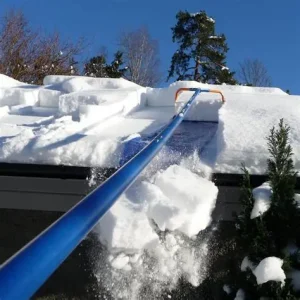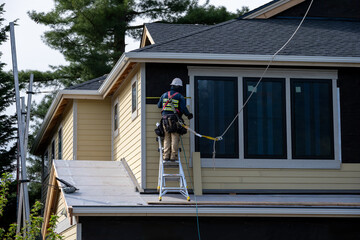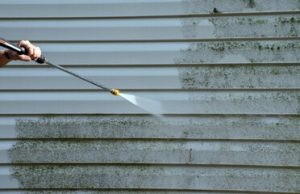A roof should breathe even when winter refuses to soften. When ice dams form, that rhythm freezes with it. Each ridge of frost traps meltwater, forcing it backward under the shingles. What follows is the quiet destruction of structure and comfort.

Remove Ice Dams From Roof begins before the ice even thickens. It’s about understanding how warm air rises and where it escapes. The smallest attic leak or uneven insulation creates warm pockets. Those pockets melt snow that later refreezes at the edge, forming the dreaded dam.
A roof’s battle with ice is not about the snow itself but the trapped heat below. When temperatures dance between freezing and thawing, the imbalance grows. Water finds the easiest way to flow, which often means seeping into hidden spaces. Soon ceilings stain, insulation soaks, and wood swells.
Traditional scraping methods look tempting but risky. Metal tools can bite through shingles faster than the ice melts. Steam-based approaches are safer, allowing controlled melting that preserves materials. Patience becomes more important than force when dealing with ice structures.
The real artistry lies in managing roof temperature. Balanced ventilation stops ice dams before they form. Air should flow evenly from eaves to ridge, letting temperatures stay consistent. This subtle movement keeps snow from melting too quickly near warm spots.
Insulation carries equal weight in this defense. Gaps around vents, ducts, and light fixtures allow heat to escape. By sealing those leaks, homeowners create a calm temperature field beneath the roof. The snow above then remains stable, never forced to refreeze along edges.
Sometimes, thick layers of snow act as insulation too, but only when uniform. Uneven buildup leads to sloped melting that channels water to colder zones. Once it reaches the overhang, it freezes again, thickening the dam. Thus, clearing snow evenly across surfaces reduces the risk dramatically.
There’s a delicate balance between removal and restraint. Clearing too much snow exposes shingles to rapid freeze-thaw cycles. Leaving too much invites trapped moisture. The safest path lies in removing just enough to relieve weight and encourage smooth melting.
While ladders and rakes are the common tools, technique defines the outcome. Angled pulls that mimic natural runoff protect roof grains. Direct chipping, on the other hand, shortens a roof’s lifespan. Working from a distance and avoiding leverage points prevents hidden cracks.
For larger or persistent dams, heated cables offer a temporary fix. They trace a path for meltwater, carving channels through ice. Yet this is only a relief measure, not a solution. The real cure remains in heat control and air balance.
Attics often tell the story of a roof’s health. Damp rafters, frost lines, or darkened insulation indicate heat leakage. Even minor gaps in the ceiling plane cause major thermal shifts. Restoring the boundary between warm living space and cold roof deck is key.
Homeowners who take proactive steps before snow season fare best. An inspection of insulation depth and air sealing pays off when storms arrive. A roof that resists temperature swings resists ice dams by nature. Prevention is less dramatic than repair but far more effective.
When ice dams already exist, melting them slowly protects the roof. Warm water or calcium-based melting agents break ice gently without harming surfaces. Pouring hot water or salt creates sharp changes that can damage the finish. The secret is consistency, not speed.
Another overlooked strategy is moisture redirection. Gutters and downspouts often freeze solid, blocking runoff. By maintaining clear channels before snowfalls, meltwater finds safe exits. When water flows freely, the ice has no reason to linger.
Every roof carries its unique pattern of heat and shade. Some sections may always gather snow faster than others. Monitoring those zones after each storm reveals evolving weak spots. Over time, tailored adjustments create harmony across the entire system.
The battle against ice dams is not just about roofing but about physics. Heat moves upward, air circulates, moisture follows temperature shifts. Understanding this invisible choreography transforms reaction into control. A homeowner who sees the roof as a living mechanism gains the upper hand.
Winter might seem hostile, but it rewards preparation. A roof properly sealed and vented thrives through storms quietly. Each snow layer melts and drains naturally, without obstruction. Comfort remains uninterrupted beneath, free from the slow damage of trapped ice.
When the season ends, a careful review completes the cycle. Attic insulation may compress, vents may clog, seals may loosen. Reassessing and adjusting each element ensures readiness for the next freeze. Maintenance becomes a rhythm instead of an emergency.
The beauty of a roof free from ice dams lies in its silence. No dripping ceilings, no sagging eaves, no frantic scraping. It’s a kind of peace that begins with knowledge and ends with foresight. A reminder that even in coldest months, balance creates warmth.
The cost of inaction is subtle but relentless. Each unnoticed leak compounds into warped wood or hidden mold. Structural damage creeps in layers beneath the surface. Addressing the issue early keeps the story simple, rather than a costly reconstruction.
Removing ice dams is both science and mindfulness. It demands awareness of temperature gradients and air movement. It also asks for patience in the face of natural cycles. Roofs that last are those treated as systems, not as separate surfaces.
Modern materials make the task easier, but wisdom makes it lasting. Reflective barriers, thermal sensors, and improved vent designs offer precision. Yet without consistent care, even the best equipment falters. A homeowner’s diligence remains the most reliable defense.
When icicles glitter from roof edges, they appear beautiful yet deceitful. Each shimmering point may signal water trapped and refrozen. Behind that beauty hides expansion pressure capable of lifting shingles. Removing them safely restores both function and integrity.
The rhythm of melting and freezing defines a home’s relationship with winter. Controlled melting flows like time—steady, predictable, and harmless. Uncontrolled freezing stops that flow, turning harmony into strain. Managing it transforms endurance into comfort.
Ice dam removal therefore becomes an act of preservation, not just repair. It preserves not only roofs but memories within the home. Every drip prevented, every leak avoided, extends the structure’s story. That’s what makes it worth the effort, year after year.
As temperatures rise in spring, remnants of past neglect may appear. Watermarks, peeling paint, and damp odors serve as quiet warnings. Addressing them promptly avoids deeper structural issues later. The transition season becomes a moment for renewal.
A home’s upper boundary defines its resilience. Just as foundations hold from below, roofs protect from above. Ice dams test that strength with silent persistence. Mastering their removal affirms control over the elements, not surrender to them.
No winter roof is truly safe without inspection. Even small patches of frost can hide forming dams. Regular checks after heavy snowfall detect danger early. A few minutes of observation prevent months of repair.
The harmony between roof, air, and snow represents nature’s balance in miniature. Too much warmth or cold disrupts it. Keeping that equilibrium steady is both art and necessity. Once achieved, the roof becomes a shield rather than a battleground.
True mastery of ice dam removal lies in foresight. Every preventive measure stacks toward a seamless defense. The home becomes a system where temperature, airflow, and structure unite. That unity is what keeps the snow flowing, not freezing, in its rightful path.
In the end, a roof freed from ice dams does more than stay dry. It breathes, adapts, and endures. It transforms harsh seasons into manageable rhythms. That quiet strength defines a well-kept home, ready for whatever the next winter brings.

